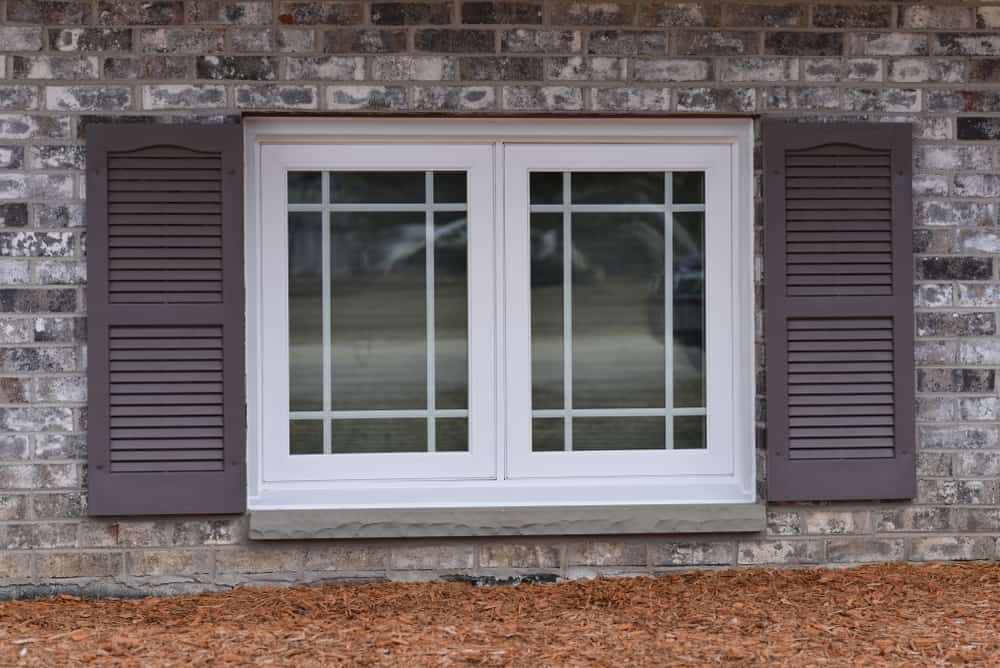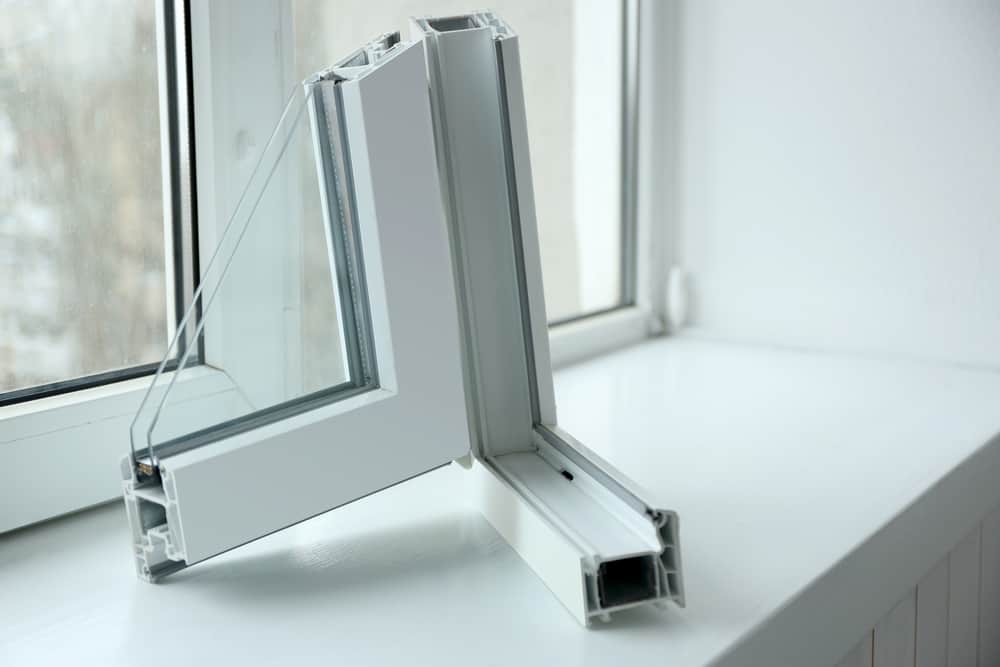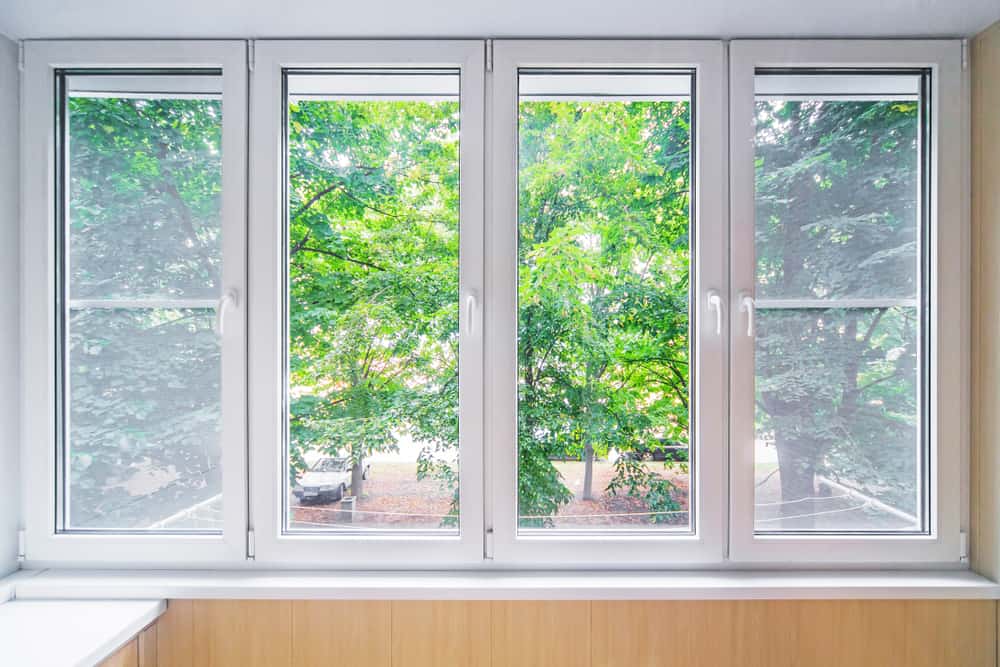Windows are crucial parts of every house that beautify your home and increase its value. People typically made them of wood in the past, but nowadays, most homeowners choose between two materials available on the current market.
Therefore, you can find yourself insecure about which option, vinyl vs. fiberglass windows, is better for your needs. Both materials are artificial, durable, inexpensive, and water-resistant. However, they also differ in some crucial features, so you should check all advantages and downsides of both options before purchasing.
Table of Contents
Fiberglass Windows
Manufacturers make fiberglass during pultrusion, a process of pulling polyester resins through a heated die. After they get plastic and glass fibers amalgam, they mold or cut them into desired shapes.
Fiberglass window frames are high-quality, durable, and energy efficient. However, they are costly, and it is almost impossible to install them without professional help. In most cases, you need to order those windows from the manufacturer directly since they are not widely available in stores.
Pros
- Fiberglass is a strong, energy-efficient, fire-resistant, and durable material
- You can find a wide range of colors and can repaint it
- This temperature-stable material is resistant to shrinking, swelling, moisture, corrosion, rot, and mold
- It is eco-friendly and provides excellent noise insulation and more light
- It lasts about 50 years with low maintenance
Cons
- Fiberglass windows come in fewer color options, and it is difficult to customize
- It is sensitive to UV rays and fades in direct sunlight
- These windows are hard to find, so you need to order them ahead of time
- Professional installation is recommended since it is pretty complicated
- It is a relatively expensive option
Vinyl Windows
Vinyl windows made of flexible and durable PVC (polyvinyl chloride) material typically have an internal metal structure, providing extra strength. They are popular nowadays thanks to an excellent balance between energy efficiency, durability, availability, and price. Plus, you can install them yourself as a DIY project.
Pros
- Vinyl windows are widely available and inexpensive
- You can effortlessly install them yourself
- This moderately energy-efficient and durable material won’t rot or swell over time
- This material requires low maintenance, and there is no need to paint it
- It lasts for approximately 30 years
Cons
- Vinyl windows come in limited color and size options
- This low-quality material shrinks in low temperatures and warps in the heat, becoming structurally weak in summer
- Repainting it can be challenging
- You need to wash these double-glazed windows regularly since electrostatic dust quickly sticks to plastic frames
Vinyl vs. Fiberglass Windows
Both vinyl and fiberglass windows are excellent options for your home. They are more affordable than wood and are not prone to mold. Plus, both are better insulators compared to aluminum frames.
The main question is which of these alternatives is better. When you check the list of their features, you will see that they are pretty similar on some points. In other words, it is up to you to decide based on the main differences, including durability, DIY installation possibility, price, and environmental impact.
Vinyl vs. fiberglass window types |
||
| Feature | Vinyl window | Fiberglass window |
| Availability | Widely available | Less available |
| Appearance | This material comes in limited color options, and it is hard to repaint it | You can repaint the smooth fiberglass surface whenever you want |
| Durability | It is a durable material | It is about 40% more durable option |
| Lifespan | It lasts about 30 years | It lasts for over 50 years |
| Strength | Relatively strong material | Solid material |
| Stability | This thermoplastic material is prone to overheating | This thermoset material is less prone to overheating |
| Safety | Low safety risk | Problematic irritating fibers release during installation |
| Temperature resistance | It can’t stand extreme temperature changes | This material effortlessly handles temperature changes |
| UV rays resistance | A typical belief that vinyl is entirely not UV resistant is a common misconception | It successfully resists UV rays |
| Customization | Pane size and shape are customizable | Fiberglass windows come in fewer color and shape options and are difficult to customize |
| Energy efficiency | Medium | Excellent |
| Installation | Simple DIY project | Professional installation |
| Maintenance | Almost maintenance free | Almost maintenance free |
| Eco-friendly | Environment unfriendly material because of released carcinogen dioxin during the production process | A better eco-friendly option |
| Price with installation | $500 to $800 | $600 to $1,700 |
| Real estate value | Low | Medium |
Appearance
Vinyl – Vinyl comes with a smooth surface, making it hard to paint. It is also weaker, so window frames made of this material are always thicker.
Fiberglass – Fiberglass comes with wider decorative options and color range. Plus, it is a textured and paintable material.
Winner – Fiberglass!
Performance
Vinyl – Vinyl windows have excellent insulating properties, but the way of construction significantly affects this feature. Additionally, the insulating level also depends on vinyl frame quality and glass type, fill, and a number of layers.
Fiberglass – Fiberglass provides superior insulating properties.
Winner – Slight advantage for fiberglass.
Durability
Vinyl – Vinyl windows are a durable option, but a frame made of this material contracts and expands with excessive temperature fluctuations during the seasons.
Fiberglass – Windows made of fiberglass last about 40% longer than vinyl windows because this material is stronger and resistant to cracking and warping.
Winner – Fiberglass!
Safety
Vinyl – Vinyl windows come with low safety risk to you as a homeowner.
Fiberglass – Be careful while installing fiberglass windows since inhaling the fibers from fiberglass irritate the eyes, skin, and throat. Once installed, these windows bring a low risk of inhaling harmful particles.
Winner – Vinyl!
Noise dampening
Vinyl – Vinyl windows are not an ultimate option regarding noise dampening.
Fiberglass – Fiberglass windows successfully block most noise from the outside.
Winner – Fiberglass!
Energy efficiency
Vinyl – Vinyl is a material with good energy-efficient properties. Windows made of this material will save energy, thanks to hollow cavities. However, vinyl expands to heat and contracts at cold, lowering its energy efficiency.
Fiberglass – Although both materials are decent insulators, fiberglass is about 15% more energy efficient than the other option. The reason is fibers in the material composition that prevent window frames from contracting in the cold.
Winner – Fiberglass!
Maintenance
Vinyl – Vinyl windows are nearly maintenance-free. If drastic temperature changes cause the vinyl window seal to break, you should caulk them to prevent losing insulating capabilities.
Fiberglass – Fiberglass windows are nearly maintenance-free. You should paint them when fading over time.
Winner – Draw.
DIY installation
Vinyl – You can effortlessly install vinyl windows as a part of your own DIY project. It is enough to be skillful and have the necessary tools, like a tape measure, power drill, utility knife, and hammer. That way, it is possible to save approximately $100 to $200 per window.
Fiberglass – Fiberglass doesn’t flex, so it is impossible to install fiberglass windows unless you are a professional. You need to hire an expert in that field who owns a specific tool necessary for this project.
Winner – Vinyl!
Eco-friendly material
Vinyl – The vinyl window production process releases dioxin, a carcinogen compound, making this material significantly environment unfriendly.
Fiberglass – Even though fiberglass is not an easy-to-recycle material, it reduces energy consumption. Plus, it is produced of recycled glass without releasing harmful chemicals into the environment, making it a more eco-friendly option.
Winner – Fiberglass!
Availability
Vinyl – Vinyl windows are widely available on the market since almost every reputable manufacturer produces them.
Fiberglass – Since fiberglass windows production is more complicated, only fewer manufacturers produce them. It is also challenging to order them in customized shapes.
Winner – Vinyl!
Price
Vinyl – Vinyl windows are inexpensive because of the less complicated producing process, and you need to pay $500 to $800 to install one.
Fiberglass – One fiberglass window costs approximately $600 to $1,000 with installation included.
Winner – Vinyl!
Real estate value
Vinyl – When the buyer considers window types installed in your home vital, those made of vinyl will have lower resale value.
Fiberglass – Even though windows are not a significant factor in determining your home selling price, fiberglass windows have some resale value.
Winner – Fiberglass!
Deciding Factors for Choosing One or Another Window Frame
Once you learn everything about both materials’ advantages and downsides, choosing the right windows for your home can be tricky. In most cases, your decision will depend on a few crucial factors, such as:
Home’s style
Most owners try to fit window type with their home’s exterior. It is not too complicated nowadays, thanks to materials like fiberglass and vinyl that come in numerous color and style options.
Weather in your region
Many people don’t consider the climate when choosing windows, but it is one of the most vital features you should keep in mind. Always select the best option based on the number of cold and heat days and rain and snow frequency in your region.
Your budget
If you have a limited budget, it is crucial to compare prices before picking out the best windows for your home.
Summary
Both vinyl and fiberglass window types have existed for years, so there is plenty of information on their characteristics. You can effortlessly compare these two materials and pick out the best windows for your home, depending on your taste, the region where you live, and the budget you have at your disposal.


